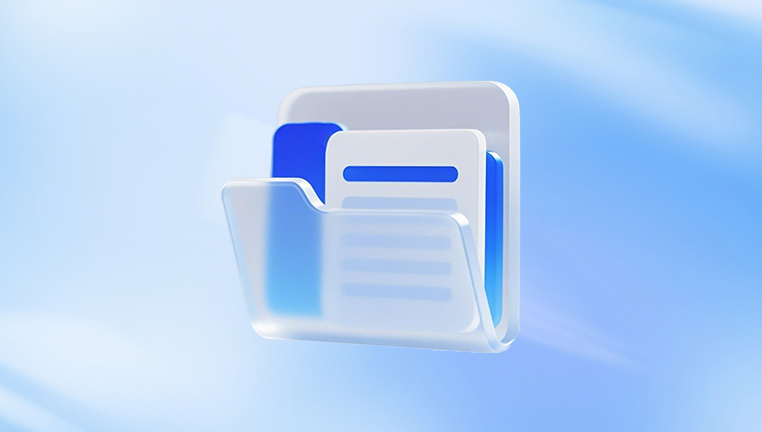Losing an unsaved Excel file can be a frustrating experience, especially after working tirelessly on complex data, charts, or financial models. Whether due to an accidental shutdown, system crash, or software glitch, not saving your work can lead to the fear of starting over. Fortunately, Microsoft Excel and various recovery strategies offer multiple ways to retrieve unsaved files.
1. Why Excel Files Get Lost
Before diving into recovery methods, it's important to understand common reasons why Excel files may not be saved:
Accidental closure: The file was closed before saving changes.
Power failure: A sudden power outage shut down the system.

Crash or freeze: Excel or the operating system crashed before saving.
User error: The user chose not to save changes or forgot to hit "Save".
Software updates: System or application updates may force a restart.
Recognizing the cause can help you identify the most effective recovery method.
2. Use Excel's Built-in AutoRecover Feature
Microsoft Excel has a feature called AutoRecover that periodically saves versions of your work even if you haven't manually saved the file. This feature is a lifesaver when Excel crashes or your computer restarts unexpectedly.
How to Check AutoRecover:
Open Excel.
Click on File > Info.
Look for a section labeled Manage Workbook or Manage Versions.
If Excel autosaved your file, it should appear there.
Click to open and save it immediately to a safe location.
AutoRecover files are usually saved in the following path:
makefile
CopyEdit
C:\Users\[Your Username]\AppData\Roaming\Microsoft\Excel\
Important Notes:
AutoRecover only works if the file has been saved at least once.
If you never saved the file, skip to the next method.
3. Recover Unsaved Workbooks (First-Time Saves)
If you were working on a brand-new Excel file that was never saved, you still have a chance to recover it using the Unsaved Files option.
Steps to Recover Unsaved Workbooks:
Open Excel.
Click on File > Open.
Scroll down and click Recover Unsaved Workbooks at the bottom.
A window will open showing temporary Excel files.
Find your file (look at the timestamp), open it, and then save it.
These unsaved files are stored in:
makefile
CopyEdit
C:\Users\[Your Username]\AppData\Local\Microsoft\Office\UnsavedFiles\
Best Practices:
Regularly check this folder if you frequently lose unsaved work.
Consider bookmarking the path for quicker access in emergencies.
4. Enable and Customize AutoSave Settings
For users with Microsoft 365 or Excel 2019+, there's a feature called AutoSave that saves your file every few seconds when stored on OneDrive or SharePoint.
How to Enable AutoSave:
Save your file to OneDrive or SharePoint Online.
Look at the top-left corner of Excel and switch the AutoSave toggle to On.
Excel will continuously save your work, minimizing the risk of data loss.
This is especially helpful for those who forget to save regularly or experience frequent crashes.
5. Search for Temporary or Backup Files
Excel often creates temporary files while you're working. These can sometimes be used to recover unsaved data.
How to Find Temporary Excel Files:
Press Windows + E to open File Explorer.
In the search bar, type:
markdown
CopyEdit
*.tmp OR ~*.xls*
Sort by date modified and look for recent files with Excel-related extensions.
Try opening each one in Excel to see if it contains your lost data.
Temporary Files Locations:
%Temp% (Type in the Run box Windows + R)
C:\Users\[Your Username]\AppData\Local\Temp
These files may not retain formatting or full formulas but can still be helpful in data recovery.
6. Use File History or Previous Versions (Windows Only)
If your Excel file had been saved at least once before it was lost or corrupted, you can restore it using Windows' File History or Previous Versions feature.
Steps to Restore a Previous Version:
Navigate to the folder where the file was saved.
Right-click on the Excel file or the folder.
Choose Restore previous versions.
Select a version from the list and click Restore.
Ensure that File History is enabled on your system in Control Panel under System and Security > File History.
7. Recover from OneDrive or SharePoint
If you store your files in OneDrive or SharePoint, recovery is even easier.
On OneDrive:
Log in to OneDrive.com.
Navigate to the folder where the Excel file was located.
Click the three dots next to the file > Version history.
Choose a previous version to restore.
On SharePoint:
Similar steps apply. Go to the document library, select the file, and view Version History.
These services retain multiple backups and autosave changes frequently.
8. Recover Using Data Recovery Software
Drecov Data Recovery
Drecov Data Recovery is a robust software solution designed to help users recover lost, deleted, formatted, or inaccessible files from a wide range of storage devices. Whether you’ve accidentally deleted important documents, emptied the Recycle Bin, or experienced a sudden system crash, Drecov Data Recovery provides a reliable way to retrieve your data with just a few simple steps.
One of the key features of Drecov Data Recovery is its user-friendly interface, which makes it easy for both beginners and advanced users to navigate. The software supports recovery from hard drives, SSDs, USB flash drives, SD cards, memory cards, and external storage devices. It can recover various file types, including photos, videos, documents, emails, and archives.
9. Use Mac Time Machine (macOS)
For Mac users, Time Machine is the go-to method for restoring previous file versions.
Steps to Restore with Time Machine:
Open the folder where the file was originally saved.
Open Time Machine from the menu bar.
Navigate to a time when the file existed.
Select the file and click Restore.
Make sure Time Machine was enabled before the data loss.
10. Recover from Email Attachments or Cloud Backups
If you emailed the Excel file or uploaded it to Google Drive, Dropbox, or another cloud service, it’s worth checking those platforms.
Look in your email's Sent folder or Drafts.
Search your Google Drive or Dropbox using keywords.
Restore from cloud recycle bins or version history.
Sometimes, auto-saved email drafts or cloud sync folders contain earlier versions of your work.
11. Preventive Measures to Avoid Future Loss
Once you’ve recovered your Excel file, it's essential to implement strategies to avoid losing files again.
Best Practices:
Enable AutoSave or AutoRecover.
Save files regularly (Ctrl + S is your best friend).
Store documents in OneDrive or SharePoint.
Use backup software or cloud sync tools.
Save new files immediately after beginning work.
Set AutoRecover Frequency:
Go to File > Options > Save.
Set AutoRecover interval to 1 or 2 minutes.
Check Keep the last AutoRecovered version if I close without saving.




